The volleyball net serves as the central component of the game, acting as a physical barrier that players must overcome to score points.
It separates the two teams and defines the playing area, challenging players to strategically position themselves, communicate effectively, and utilize their skills to pass, set, and attack the ball over the net.
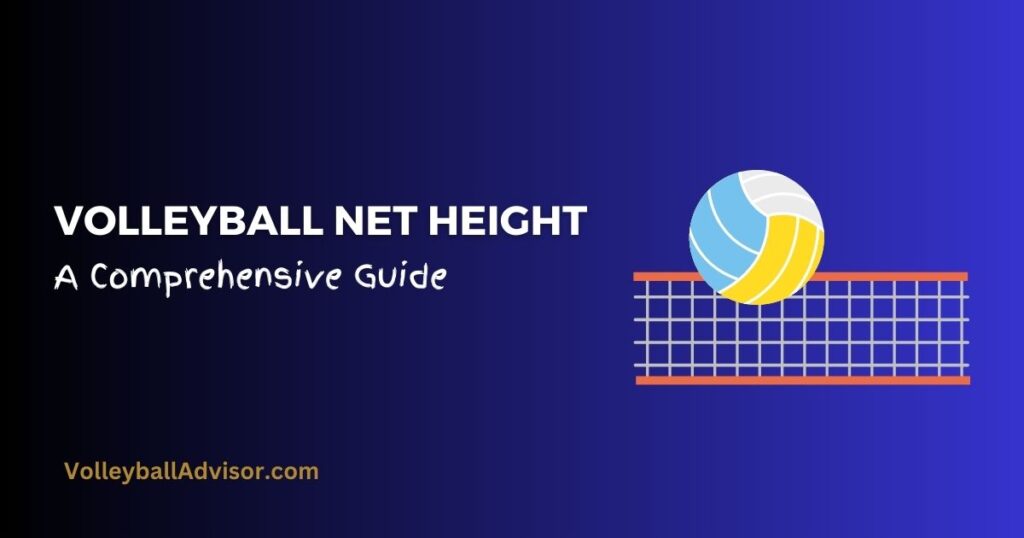
The net also helps maintain the structure of the game, ensuring a fast-paced, dynamic, and engaging experience for both players and spectators.
The role of net height in skill development and competitiveness
The height of the volleyball net plays a critical role in the development of skills and competitiveness among players.
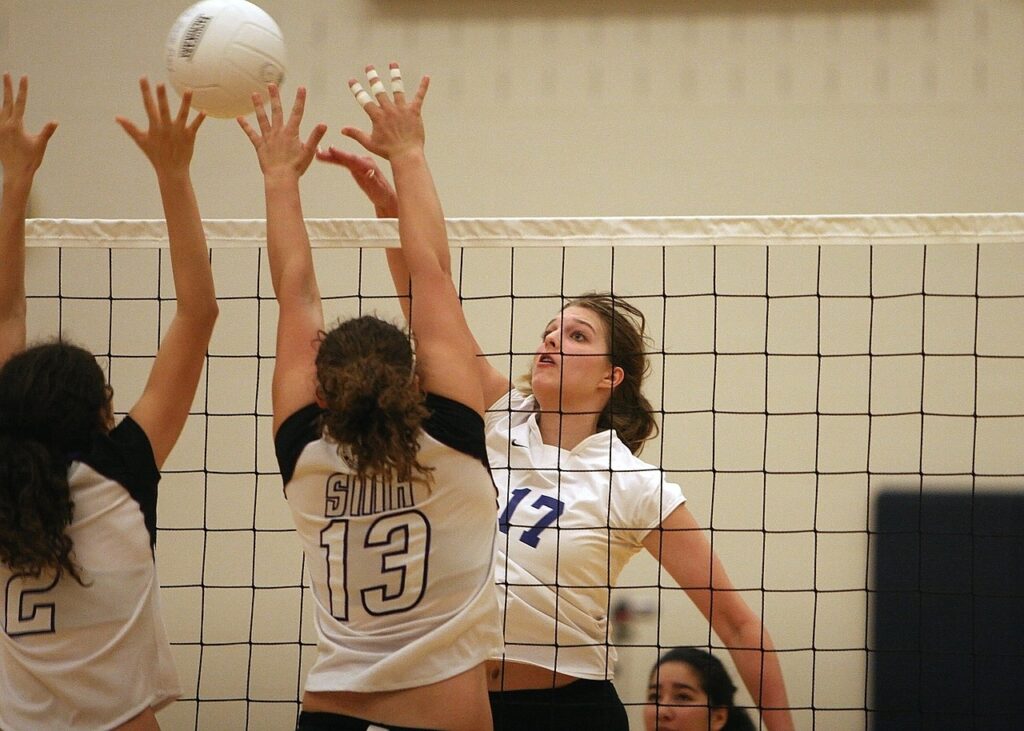
A net set at the appropriate height for a specific age group or skill level allows players to hone their techniques, maximize their physical abilities, and develop a deeper understanding of the game.
Having standardized net heights for different categories, such as gender and age, ensures a level playing field, promoting fair competition and fostering growth in the sport.
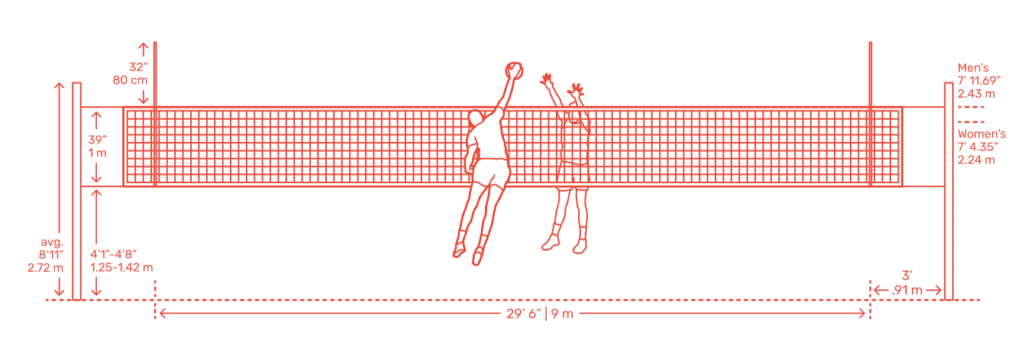
Furthermore, adjustable net heights allow for adaptability and inclusiveness, enabling people of varying skill levels, physical abilities, and backgrounds to participate and enjoy the game of volleyball.
Volleyball Net Height
Indoor volleyball Net Height
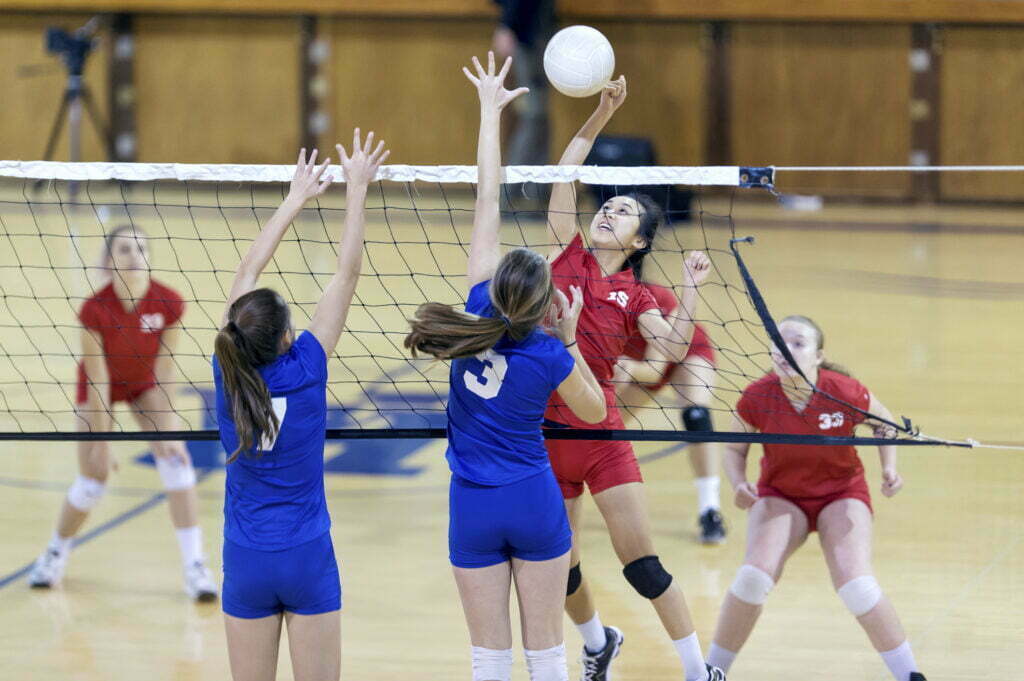
- Men’s and coed In men’s and coed indoor volleyball, the standard net height is set at 2.43 meters (7 feet 11 5/8 inches). This height is used in both professional and amateur competitions, including college, club, and recreational leagues.
- Women’s For women’s indoor volleyball, the standard net height is slightly lower, set at 2.24 meters (7 feet 4 1/8 inches). This height is used in professional, college, club, and recreational leagues as well.
Beach volleyball Net Height
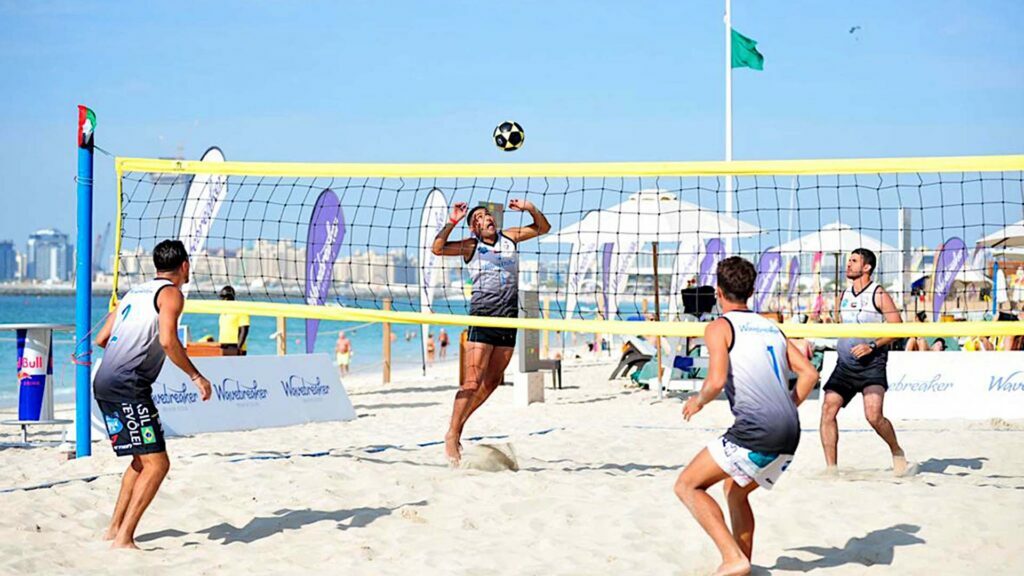
- Men’s In men’s beach volleyball, the standard net height is the same as indoor men’s volleyball, set at 2.43 meters (7 feet 11 5/8 inches). This height is used in both professional and amateur beach volleyball competitions.
- Women’s For women’s beach volleyball, the standard net height is also the same as women’s indoor volleyball, set at 2.24 meters (7 feet 4 1/8 inches). This height is used in professional and amateur competitions alike.
Youth volleyball Net Height
Age groups and corresponding net heights Youth volleyball has various net heights to accommodate the different age groups and skill levels.
The typical age groups and their corresponding net heights are as follows:
- Under 12: 2.10 meters (6 feet 10 3/4 inches)
- Under 14: 2.24 meters (7 feet 4 1/8 inches) for girls, 2.33 meters (7 feet 7 3/4 inches) for boys
- Under 16: 2.24 meters (7 feet 4 1/8 inches) for girls, 2.43 meters (7 feet 11 5/8 inches) for boys
- Under 18: 2.24 meters (7 feet 4 1/8 inches) for girls, 2.43 meters (7 feet 11 5/8 inches) for boys
Paralympic sitting volleyball Net Height
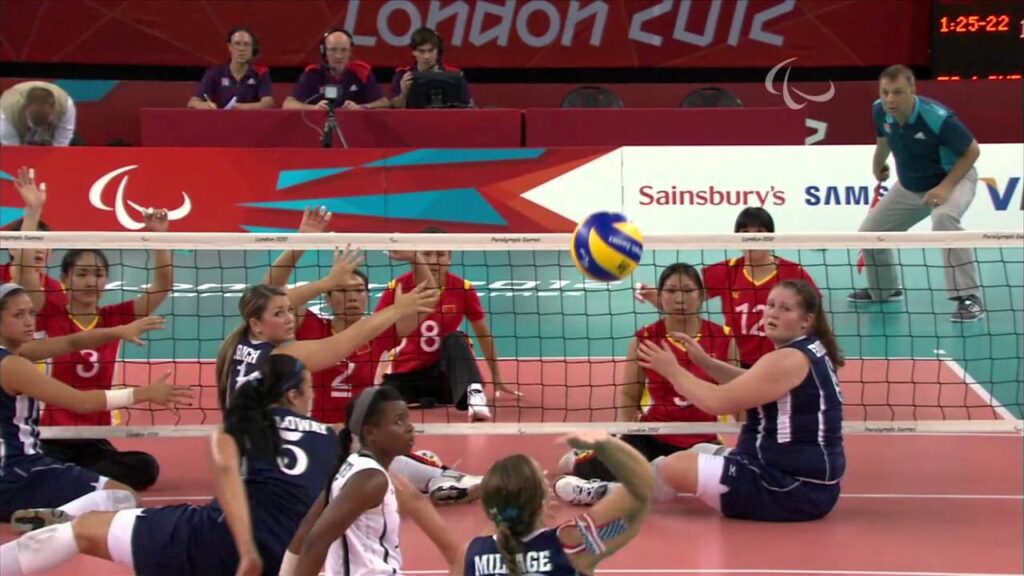
- Men’s In men’s sitting volleyball, the standard net height is set at 1.15 meters (3 feet 9 1/4 inches). This height is used in all international competitions, including the Paralympic Games.
- Women’s For women’s sitting volleyball, the standard net height is slightly lower, set at 1.05 meters (3 feet 5 1/3 inches). This height is also used in international competitions, including the Paralympic Games.
Volleyball Net Size
Volleyball nets have specific dimensions, depending on the type of volleyball being played (indoor or beach volleyball). Here are the standard sizes for both indoor and beach volleyball nets:
Indoor Volleyball Net Size
- Width: 9.5 meters (31 feet 2 inches)
- Height: 1 meter (3 feet 3 inches)
- Mesh size: 10 x 10 centimeters (4 x 4 inches)
- Side bands: 5 centimeters (2 inches) wide, running along the full length of the net
- Top band: 7 centimeters (2.75 inches) wide, also running along the entire length of the net
Beach Volleyball Net Size
- Width: 8.5 meters (27 feet 11 inches)
- Height: 1 meter (3 feet 3 inches)
- Mesh size: 4 x 4 centimeters (1.6 x 1.6 inches) or smaller
- Side bands: 5 to 8 centimeters (2 to 3 inches) wide, running along the full length of the net
- Top band: 7 to 10 centimeters (2.75 to 3.94 inches) wide, also running along the entire length of the net
Factors affecting the choice of net height
Age
Age is a crucial factor in determining the appropriate net height for volleyball players.
As players grow and develop physically, the net height must be adjusted accordingly to maintain fair competition and facilitate skill development.
Youth volleyball leagues typically use different net heights for various age groups to accommodate the changing physical abilities and skill sets of younger players.
Skill level
The skill level of the players involved is another important factor to consider when choosing the net height.
For beginner and recreational players, using a lower net height can help them develop proper techniques and build confidence in their abilities.
As players progress and improve their skills, the net height can be gradually increased to provide a more challenging and competitive environment.
Gender
Gender plays a role in determining the appropriate net height for volleyball competitions.
Typically, men’s and women’s net heights are different due to the average height differences between male and female players.
Having separate net heights for men and women helps ensure fair competition and allows players to maximize their skills and physical abilities.
Type of volleyball (indoor, beach, grass, etc.)
The type of volleyball being played also impacts the choice of net height.
Indoor, beach, and grass volleyball have varying playing conditions, which can affect the way the game is played.
For example, beach volleyball is played on sand, which can be more challenging to move on compared to a hard indoor court.
As a result, beach volleyball net heights are the same as those in indoor volleyball, despite the added difficulty of playing on the sand.
In informal grass volleyball games, players might choose to adjust the net height based on the skill level of the participants or the desired level of challenge.
Setting up the volleyball net
Tools and equipment needed
To set up a volleyball net, you will need the following tools and equipment:
- Volleyball net with appropriate dimensions (width and mesh size)
- Two vertical poles (often adjustable) with secure bases or ground sleeves
- Guy wires or straps and stakes (for outdoor setups)
- Antennae (attach to the net to define the playing area)
- A measuring tape or height-measuring device
- A wrench or ratchet for tightening bolts or adjusting pole height
- A tensioning device or winch system (optional, but helpful for maintaining proper net tension)
Measuring the net height
To measure the net height accurately, follow these steps:
- Set up the poles according to the manufacturer’s instructions, ensuring they are the correct distance apart and firmly secured.
- Attach the net to the poles, either by using the provided hardware or a tensioning device.
- Use a measuring tape or height measuring device to check the net height at the center and both sides of the net. The height should be measured from the top edge of the net to the playing surface.
- Adjust the pole height or tension as needed to achieve the desired net height. Make sure to maintain equal height on both sides.
Tips for accurate setup and proper tension
- Ensure the poles are straight and securely anchored to prevent movement during play. For outdoor setups, use guy wires or straps and stakes to stabilize the poles.
- Check the playing area for any obstructions or hazards, such as rocks or uneven surfaces, and clear them before setting up the net.
- Use a tensioning device or winch system to help maintain proper net tension throughout the game. A well-tensioned net will have minimal sagging and will provide a consistent playing experience.
- Periodically check the net height and tension during play, especially in outdoor settings where weather conditions may affect the setup.
- When setting up a net for a specific skill level or age group, consult the appropriate volleyball governing body’s regulations to ensure the net height complies with the established standards.
Common misconceptions about volleyball net height
The impact of net height on gameplay
One common misconception is that a higher net automatically makes the game more challenging, while a lower net makes it easier.
While net height does influence the gameplay, it is not the sole factor determining the difficulty of the game.
Other aspects, such as player skill level, teamwork, and strategy, also play a significant role in the game’s overall competitiveness.
In fact, playing with an inappropriate net height for a specific age group or skill level may hinder skill development and negatively affect the overall playing experience.
Debunking myths about taller players and net height
There is a prevailing myth that taller players have a natural advantage in volleyball due to their height and should play with a higher net to level the playing field.
While height can be an advantage in some aspects of the game, such as blocking and attacking, volleyball is a multifaceted sport that requires a wide range of skills, including passing, setting, serving, and court awareness.
Taller players may not necessarily excel in all these areas. Here you can read about Tallest Women’s Volleyball Players.
Moreover, adjusting the net height based on individual players’ heights would not necessarily create a fair playing environment.
The standardized net heights set by volleyball governing bodies aim to provide a balanced and competitive environment for all players, regardless of their height.
It is essential to focus on developing well-rounded skills and teamwork, rather than relying solely on physical attributes.
Frequently asked questions
Why are there different net heights for men’s and women’s volleyball?
Can I adjust the net height for recreational or informal games?
How often should I check and adjust the net height during a game or practice?
How can I accurately measure the net height on an uneven playing surface, such as on grass or sand?
What is the standard distance between the two poles when setting up a volleyball net?
Are there any regulations on the width and mesh size of a volleyball net?
Conclusion
Understanding the importance of volleyball net height and its standard dimensions is crucial for players, coaches, and enthusiasts of the sport.
The net height not only plays a pivotal role in skill development and competitiveness but also ensures a fair and enjoyable playing experience.
By considering factors such as age, skill level, gender, and the type of volleyball being played, appropriate net heights can be chosen to accommodate the needs of players at various stages of their volleyball journey.
Setting up the volleyball net accurately and maintaining proper tension is essential for maintaining the integrity of the game.
Familiarity with the common misconceptions and frequently asked questions about volleyball net height can help debunk myths and provide a better understanding of the sport.
In conclusion, volleyball is a dynamic and engaging sport that relies on a properly set up net to create a fun, challenging, and rewarding experience for players and spectators alike.
By adhering to the standardized net heights and dimensions, players can enjoy a level playing field, hone their skills, and embrace the spirit of fair competition.
